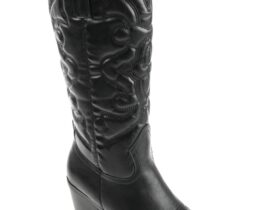5 Tips To Buy Eyeglasses In NYC

Eye-problems can be frustrating. Add to this is the fact that buying eyeglasses is such a complicated and challenging process, which makes people with lousy eyesight to start feeling stressed and anxious most of the time. (Image Credit: Macrovector: Freepik)
If you’re looking for a place in NYC to fix your existing eyeglasses, then you should check out eyeglass frame repair NYC. However, if this is your first-time buying eyeglasses in NYC, and you have no idea where to start, then you’re in the right place.
We’ve listed the essential tips to know when searching for the perfect pair of eyeglasses.
1. Carry An Updated Eyewear Prescription
When buying eyeglasses, it helps if you have an updated eyewear prescription before you look for the right pair of eyeglasses.
Once your eyes are examined, and your shopkeeper hands you the prescription, there are some terms you’ll find written on it, whose meaning you need to know:
- Oculus Dexter (OD): This refers to your right eye
- Oculus Sinister (OS): This indicates your left eye
- Sphere (SPH): This is the power of the lens you’ll need if you are near or farsighted.
- ADD (Bifocals): This is the additional magnifying power the bottom of your lenses will possess.
- Cylinder (CYL): This is refers to lens’ power for people that suffer from astigmatism
- Axis: This is where the cylindrical power is placed on the lenses
2. Determine Your Pupillary Distance
Before you purchase eyeglasses, you should know what your Pupillary distance value is. This is a measure of the amount of space between your two pupils.
The pupillary distance is vital because opticians need it to place the lenses directly in front of your pupils so that you can have the right vision.
Commonly, pupillary distances fall within a range of 54 to 68 millimeters. You can measure your pupillary distance yourself, but we strongly recommend going to an optician for this.
3. Choose The Frame That Suits You
When selecting a frame for your eyeglasses, here are three things to keep in mind:
a. Choose A Frame That Matches With Your Face Cut
Among the many qualities of right eyeglasses, one is their ability to complement your facial features.
The perfect pair of eyeglass frames will do more than give you crystal clear vision. They’ll also accentuate your most noticeable features and give your face a better look.
Here’s a quick guide on the different face shapes and the frames that suit well with it:
- Diamond Shape: People with this shape have broad cheekbones, a protruding forehead, and a small, angular chin. Round frames with longer tops are a suitable choice for such faces.
- Round Shape: This shape features a circular face with a rounded forehead as well. The best contrasting frames for this face type are angular frames, such as rectangle-shaped, square-shaped, etc.
- Square Shape: Square shaped faces are angular and pointy. It would help if you had smooth, soft frames to pair well with this face type.
- Oval Shape: This is the most common face shape, and it looks with any frame but symmetrical ones suit it the most.
b. Choose A Frame That Appeals To Your Style
Consider the kinds of settings in which you’ll be wearing the glasses, and then decide on the appropriate frames for them.
For example, if you’re primarily buying the eyeglasses for a formal setting, such as business meetings, then it’s best to choose a frame with sober, muted colors, and professional design. If you’re a student, on the other hand, then you can be more experimental and try bolder patterns and colors.
c. Choose The Correct Size
If you already own a pair of spectacles, check behind for their written measurements so you can purchase your new eyeglasses of a similar size.
Speaking of size, there are three values you need to know:
- Eye Size: This is the horizontal width of your lens.
- Bridge Size: This refers to the distance between your two lenses.
- Temple Size: This value measures how long the arms of your frame will be.
4. Decide If You Want To Purchase Online Or Retail
Making this decision depends on how quickly you want your eyeglasses, how much money you have, and how difficult it is for you to choose a frame that fits you nicely.
There are many unique places to buy eyeglasses online, but if you want to be more involved in the selection process, it’s probably best to visit a retail store.
5. Know The Different Types Of Lenses
When buying eyeglasses, you need to know the different types of lenses that come with them. There are three main types:
- Single Vision Lenses only require you to carry one prescription throughout their use.
- Reading Glasses are made specifically to help you read books and other materials. They don’t work for different tasks and activities.
- Varifocal Lenses are a combination of both far-distance and close-up lenses. They’re perfect if you don’t want the hassle of handling multiple lenses.
Final Word
Buying glasses can be scary and nerve-wracking, but you don’t have to worry. Next time you visit a store, whether it’s online or in-person, bring a sheet with you that has all these pointers listed on them.











Leave a Reply